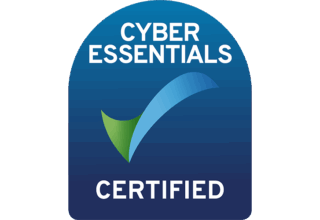
As you may be aware, we regularly meet with the Office of the Public Guardian to discuss the challenges that our members and the professional community are facing and to work together to find solutions. We recently held our quarterly meeting with them and the conversation was informative and beneficial to both parties. We are pleased to share with you a summary of what we discussed.
The latest internal figures from the OPG indicate that the numbers of LPAs being received rose by up to 1000 new submissions per day on some days. The OPG are putting this down to the ‘Martin Lewis effect’, after the well-known money expert spoke out on his TV show ‘The Martin Lewis Money Show Live’ in March about the importance of taking out LPAs and the potential risks of not doing so. However, despite this, the OPG were pleased to report a reduction in their backlogs, although they are admit this is not significant enough in their eyes to report publicly.
The OPG team advised that they have now recovered from the impact of the postal strikes, although overall timescales are still being reported at 20weeks from the date that payment is made. It is worth keeping in mind that this average purposely includes cases with errors that need to be rectified. The reason for this is so that the figure represents a likely experience for anyone submitting an LPA. The team do not ‘stop the clock’ when an error is noted and the form is returned for correction; this is due to the desire to calculate a whole and true user experience.
In an effort to drive down these averages, there is a continued focus on staffing and this is prioritised based on where the bottlenecks are in the overall process. Staff will be moved to an area where there is a backlog and once that is dealt with, they will then be moved on to the next priority area in the workflow. The vacancies available are kept open so that new staff can be bought on board regularly with working hours to suit different lifestyles.
Did you know???
The OPG have a rolling recruitment programme which means that they are constantly bringing on new staff through their recruitment process. They offer full-time, part-time, flexible working and “twilight” working hours which means that they have staff literally working through the night!

The option of correspondence by email rather than post was also discussed. Currently around 1 in 5 applications provide an email address. The team are currently looking into whether they would need to have a confirmation system in place prior to sending statutory notices to ensure the security of any updates they provide (for example confirmation of receipt). If that is required, it would add an additional step to their overall process. We suggested that if users were aware that the OPG would contact them by email then the number of email addresses on LPA forms would no doubt increase!
Electronic communication has to be the way forward…
The OPG informed us that on one occasion they had TWO royal mail vans deliver their post as the post could not fit in one van! This was post for just for one day!

We also spoke about their rejection rates, which currently sit at around 15% of all submissions. They explained that the errors fall into one of two categories; invalid at outset (where the error/s cannot be remedied) or imperfect (where replacement pages can be requested to remedy the error/s).
Common causes of invalid applications include section 5 of the Health & Welfare form being improperly witnessed and amendments not being initialled in section 9 of the Property & Finance form.
Errors that cause a form to be classed as ‘imperfect’ include improperly completed witnessing, signing in the wrong order, missing pages in submissions and required initials being missed in sections 10-11.
In order to assist with avoiding these common errors and at the suggestion of the Best Foundation, the team are working on a new publication of guidance to assist in the correct completion of the forms. It is expected that this should be released in the near future.
The team are also working on improving guidance on all matters on their website in an attempt to free up their phone lines and reduce wait times for calls that really need to be attended to over the phone.
There are plans in the future to look into producing a newsletter as the team recognise that there is a need to update not just the public but the professional community as well. However the OPG understand that it is important that it is done in the right way and gives some benefits to it’s readers.
Following our last meeting the OPG advised that they are speaking to their staff about the importance of carefully separating the LPA’s when they enter the building in order to avoid pages being mixed up in different applications. They are also conducting training on what should and should not be classed as an acceptable signature due to the inconsistencies that our members are facing with one LPA being accepted and the other rejected, but with the same signature on both.
The problem with signatures…
The OPG have stressed that they have to be extremely cautious of persons making LPA’s fraudulently. As the signature of donor is the only “identity” that they receive they must pay close attention to this, along with the other signatures on the form. The OPG were pleased to confirm that the number of fraudulently made LPA’s is extremely low but highlighted that if one was overlooked then it could have devastating consequences for the donor and the family involved.
We have suggested to the OPG that some errors would be avoided if the same caseworker was assigned to a donor who has both LPA applications or even a couple who have submitted 4 LPA’s between them. This would mean that at least there is consistency on the acceptance of the signatures and there is less chance of pages from a different LPA’s being mixed (for example a missing signing page for P&F is actually attached to the H&W LPA). However the OPG have admitted that their IT system for scanning and processing means this is challenging for them. They are asking caseworkers to trial pulling any other applications forward for the same donor but this is a manual task and so they are unsure if this will be successful.
Actions for the professional community…
1) If you don’t already, then start adding your email address for correspondence purposes in the LPA’s. We can’t guarantee that the OPG will start corresponding by email but at the moment they think email isn’t a valid communication method given that only one fifth of applications contain an email address!
2) Stop binding PA documents! They have to be unpicked when entering the OPG building meaning that vital resources are taken off the registration process.
3) Be aware of the common errors that the OPG have reported and make sure you do not fall foul to them.
We look forward to catching up with the OPG again at our next quarterly meeting in July.


